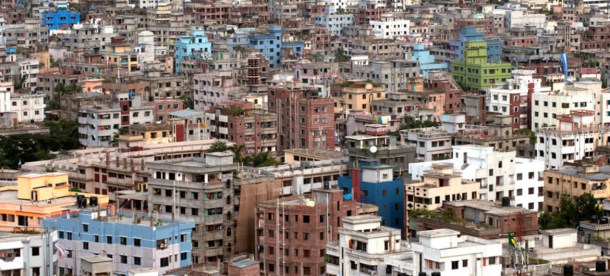Milestones, prospects and urbanising Africa (1)

Dr. Olukayode Oyeleye, Business a.m.’s Editorial Advisor, who graduated in veterinary medicine from the University of Ibadan, Nigeria, before establishing himself in science and public policy journalism and communication, also has a postgraduate diploma in public administration, and is a former special adviser to two former Nigerian ministers of agriculture. He specialises in development and policy issues in the areas of food, trade and competition, security, governance, environment and innovation, politics and emerging economies.
October 7, 2019843 views0 comments
COPENHAGEN, THE CAPITAL and most populous city of Denmark, will host a major global gathering in the next couple of days, from Wednesday, October 9, to Saturday, October 12. The agenda-setting conference is to feature decision makers – from fellow mayors to CEOs and national leaders. In particular, it will be attended by C40 mayors and deputy mayors, city delegates, climate experts, influencers, business leaders committed to take climate actions, innovators, change makers, citizens. It will serve as a platform and a unique forum to inspire participants, for member cities to present the innovative actions they have taken to reduce greenhouse gas emissions and improve climate resilience.
The C40 Cities, which – according to its name – began as a conference of mayors from 40 cities, has grown in number and influence around the world, connecting 94 of the world’s greatest cities to take bold and urgent climate action aimed at keeping global temperature rise to below 1.5 °C, leading the way towards a healthier and more sustainable future, with more cities likely to join soon. A cursory reflection will provide an idea on the growing importance and relevance of the C40 mayors’ conference. Over the past decade, C40 has convened six Mayors Summits. The 2005 summit was hosted by London, while New York hosted in 2007, Seoul in 2009, Sao Paulo in 2011, Johannesburg in 2014 and Mexico City in 2016.
C40 has been described as a network of the world’s megacities committed to addressing climate change. The prospects of the future and the inevitability of urbanisation require that cities be given attention in a proactive manner. It has been projected that around 68 per cent of the global population might live in urban areas by 2050 and “smart cities will likely be a part of this future.” The economy of the cities is also worth looking into as cities will increasingly be centres of wealth creation. What impacts will future cities make on national and global economies or vice versa? How can cities be better managed? What are the likely constraints to the cities of the future? These and many more will be issues of relevance. For instance, the combined economies of the C40 cities network have been estimated at one-quarter of global economy according to the C40 source. Cities can therefore not be ignored in future planning and policies.
Read Also:
The Sustainable Development Goals (SDG) 11, a part of the global goals for 2030, emphasised sustainable cities and communities. The framers of the goal observed that more than half of the world’s population now live in urban areas and that, by 2050, two-thirds of all humanity—that is, over 6.5 billion people—will be urban. The goal therefore concentrated on ensuring cities and human settlements that are inclusive, safe, resilient and sustainable. It held that sustainable development cannot be achieved without significantly transforming the way we build and manage our urban spaces. A statement from the UN organ on SDG noted that “the rapid growth of cities—a result of rising populations and increasing migration—has led to a boom in mega-cities, especially in the developing world, and slums are becoming a more significant feature of urban life.”
There are wide disparities, however, between cities in developed countries and those in developing and emerging economies – differences that would determine whether or not some cities could be deemed prosperous, smart, safe and sustainable. While European and American cities’ populations are lean and well managed, African cities, by contrasts, are bursting at the seams and infamous for their huge improperly managed populations with lots of complications. In the US, the ten largest cities by population in 2019 showed that New York City was the highest, with a population of 8,601,186, Los Angeles 4,057,841, Chicago 2,679,044, Houston 2,359,480 and Phoenix 1,711,356. Philadelphia had a population estimated at 1,576,596 while San Antonio had 1,565,929, San Diego recorded 1,453,775, Dallas got 1,379,735 and San Jose, 1,033,519.
All of these together are just slightly more than the population of Lagos, Nigeria. Paris in France had an official population figure of 2,140,526 as of January 2019, human density of 20,909 per square kilometre. Barcelona in Spain is the second most populous municipality of Spain, with a density of 15,991 and a population of 1,621,537 people. Madrid’s population was around 3,141,991, with about 14,000 population density. Brussels had a density of 18,863 and a population of 1,175,173. While Berlin was nearly 4 million, Rome was inching towards 4.5 million. Apart from these, the only city that came nearly double Rome’s size is London, with 8,778,500 people and human density of 14,462. Many other notable towns such as Stockholm, Amsterdam, Valencia, Athens, Copenhagen and Dublin were well below a million each.
African cities struggle to adapt as more residents compete for urban resources that are stretched to the limit. However, the rise in population is also creating new opportunities on fiscal, technological, and social fronts. Lagos, Nigeria’s – and indeed Africa’s – largest city, remains one of the fastest growing cities on the planet, with a population of 21 million. It is the seventh fastest growing city in the world. This is followed by Cairo, the political capital of Egypt, with 20.4 million people. Kinshasa, capital of the Democratic Republic of the Congo, with 13.3 million people, is the second-largest French-speaking city in the world After Paris. Luanda in Angola has 6.5 million people, while Nairobi in Kenya has 3.5 million people of which 60 per cent live in poverty. Abidjan City is the economic capital of Ivory Coast. It has an estimated population of about 4.707 million people as of 2014. The city has a population density of 8578.
Dar es Salaam is Tanzania’s largest city and the largest port city in East Africa has a population of about 4.36 million residents. According to a World Bank report, 70 per cent of Dar es Salaam’s residents live on about a dollar a day in informal, unplanned settlements which lack proper roads, water, and proper sanitation facilities. Addis Ababa in Ethiopia, however, presents an exception in a number of ways. With 3.4 million population, and annual growth rate of 12.18 per cent, Addis Ababa is experiencing a construction boom. Another exception is Johannesburg, the largest city in South Africa, and the capital of Gauteng, the wealthiest province in the country. With a population of 4.434 million, Johannesburg generates 17 per cent of South Africa’s wealth and is the 27th largest city economy in the world and a continental financial hub hosting major world banks and Africa’s largest stock in Sandton. Despite these, poverty is also rife in the city with over a million people living in the city’s slums. Johannesburg is among the most dangerous cities in the world in terms of crime and homicide. Annually there are about 28.2 murders per 100,000 people in the city.
The Financial Times recently reported on the pros and cons of rapid African urbanisation, focusing on Bamako, Mali’s capital, as a microcosm of the continent-wide phenomenon. It cited a World Bank estimate that Bamako’s population today, at 3.5 million, is 10 times larger than it was at independence in 1960. A professor at the University of Bamako, commented that that the city’s growth is a “catastrophe foretold” and that “Bamako is a time-bomb.” Among other shortcomings, the professor noted that the city lacks a land registry even as real estate booms; and the exploding population growth translates into high land prices that encourage corruption.
One of the enduring and biggest challenges for African cities is how to adapt to increasing number of people in the urban areas. In some cities, the existing infrastructure dates back to the European Colonial Era on the continent. The on-going rises in population in the affected cities is exerting unprecedented pressures on the infrastructure, thus diminishing the quality of living conditions. That effect is exposing these populations to poor living conditions and susceptibility to potential illnesses and vices. Africa must thus systematically urbanise, with the welfare, safety and quality of life of residents in minds. The imminent realities warrant these.

